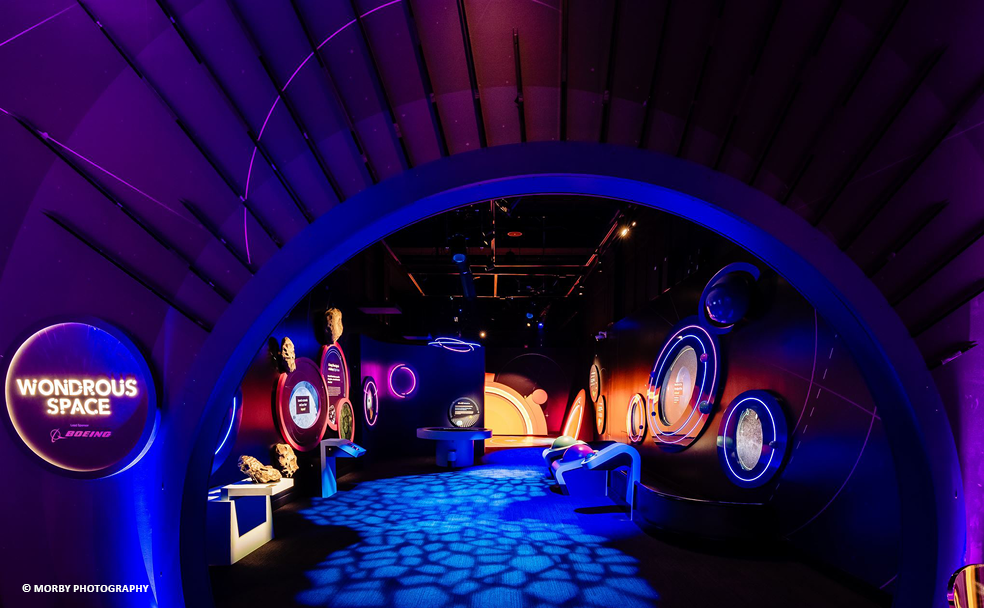EXP joins The Franklin Institute (TFI) in celebrating the grand opening of a new $8.5M immersive space experience. Wondrous Space spans over 7,500 square feet and offers guests an immersive journey of the possibilities and phenomena of space exploration.
EXP executed the lighting design for this unique project.
“Working collaboratively with the TFI team and MDSX, our goal for Wonderous Space was to re-think the traditional way we approach a museum exhibit and push the boundaries to create an attraction that captivates. Through the theatrical lighting design, we wanted inspire Wonder in the guest experience, and build intense curiosity about Space and everything beyond our horizon. Using advanced programmable LED technology in conjunction with pushing the limits of our imaginations, we created immersive moments helping to change the way guests will forever view the night sky,” said EXP’s Lighting Director Kate Sanoke.
Space is not absent of light. The lighting design for the project required a symbiotic relationship between light and shadows. The team drew inspiration from true elements of space as well as futuristic and technical precedents such as the International Space Station. The goal of the lighting design was to transport guests into a whimsical celestial realm of expedition and learning. As guests move through the first level of the exhibit, they interact with scenic elements about the insights of space such as Wonders of the Universe, Asteroid Alley and Black Out. The show elements illuminate upon trigger causing a spectacle of colorful light.
Transitioning to a contrasting upper level, guests explore the impact of design and technological innovation through space exploration. The lighting design emphasizes the cutting-edge advancements and artifacts of space to highlight the main attractions such as the Mars rover simulator, a Mars globe, a space station, a launch pad and space artifacts on loan. Using show controls, theatrical luminaires and integrated LED lighting, the team was able to create an active and dynamic design.
“A unique component of this design was the historically significant building in which it is hosted. The design team worked through some challenging existing infrastructure and completely transformed the space to transport guests to distant horizons for their learning and enjoyment. It has been a pleasure to see on social media how the public is enjoying the exhibit,” said EXP’s Lighting Designer Madison DiAddezio.
The exhibit is the first in a series of thematic exhibits by TFI that will challenge the traditional method of teaching science and incorporate themes including space, the human body, earth systems, the built environment, advanced machines and robots and computer science.
Learn more about EXP’s Lighting Design services.

